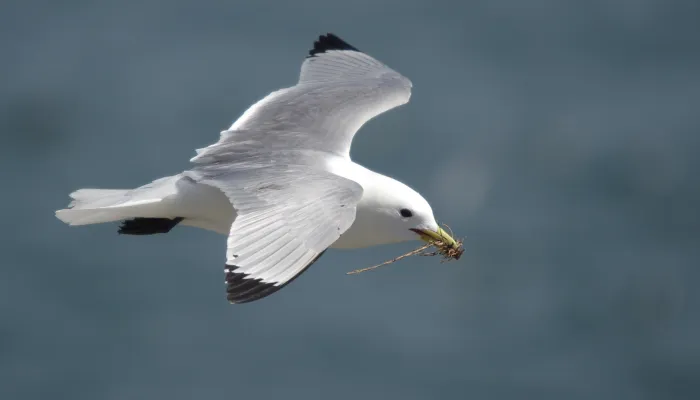| Statistics | |
|---|---|
| Length: | 39cm - 40cm |
| Wingspan: | 95cm - 110cm |
| Weight: | 300g - 500g |
| Average Lifespan: | 12 years |
A pretty, little gull, the kittiwake can be spotted nesting in colonies on clifftops and rock ledges around the UK's coast. It spends the winter out at sea.
About
The kittiwake is our most sea-loving gull, only turning up inland on odd occasions and spending winter out on the Atlantic. A medium-sized, elegant and gentle-looking gull, it eats fish, shrimps and worms, and does not scavenge at landfill sites like other gulls. It nests in colonies on clifftops and rock ledges from February until August; there are 380,000 pairs in the UK.
How to identify
The kittiwake is easily identifiable at its clifftop nesting colonies, particularly when you hear its 'kittiwake' call. Adults are silvery-grey above and white below, with a white head and black wingtips. Young birds have a black 'W' across their wings and back, a black neck-collar and a black band on their tail.
Did you know?
Studies of kittiwake colonies have shown that birds at the centre of the colony are established pairs, having been together for several years. They tend to be more successful at raising their chicks than new pairings as they share the duties of guarding the nest more equally, meaning that both parents can feed well without the chicks being left alone.

